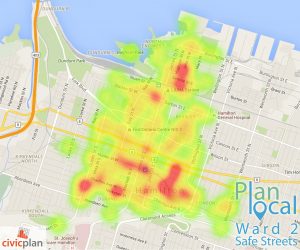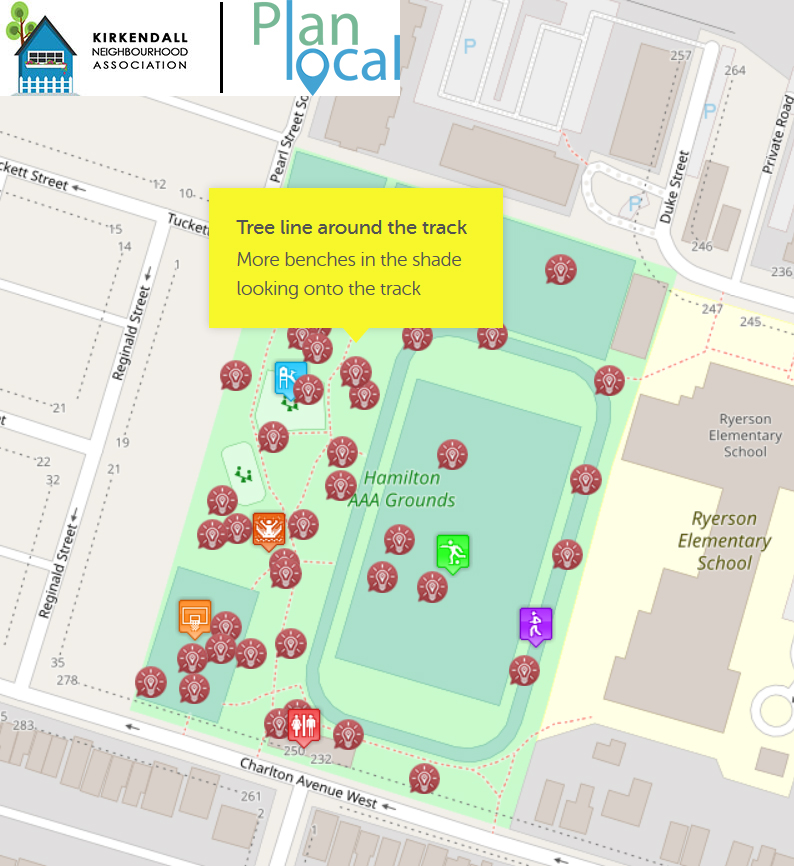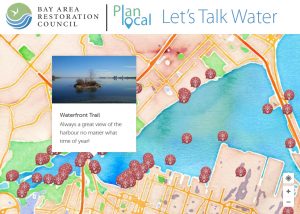Crowd Maps: Painting the Big Picture through community engagement
How do you get more people to engage effectively in planning their community?
That’s a constant question we face as we design and launch planning projects. While there isn’t a one size fits all approach, there are tools that tend to be more helpful at getting people to express themselves. Online tools can be very effective if designed and applied in the right context and one tool that we have found particularly useful is a crowd map.
A crowd map is a online map-based interface where users first select a location, and then answer questions about that space. Answers can be reviewed and then posted publicly on the map for others to see. What results over time is a picture of community’s priorities. In the countless projects Civicplan has designed and facilitated, the crowd map has been the easiest way to garner interest in engagement.
When you start with the question ‘Where?’, most people have an answer. People connect experiences with physical spaces, and these are more relatable when displayed on maps. For example, when asking where there are dangerous street locations for pedestrians, having a map in front of them can help spur thinking on all the locations of concern.
Curate Community Experiences
Crowd maps are ideal for planning a park or neighbourhood, while asking residents what they like, don’t like, or what they would like to see improved.
Crowd maps are also an effective way of sharing experiences of users of a particular area, whether a street, neighbourhood, or larger urban area like a waterfront. When users are required to select a location first, they have to think of a space and relate to an experience they had at that location. By recalling an experience, users have a defined frame of reference to provide input about a particular area.
Better Engagement = Better Data
 Another strength of a crowd map is the data provides rich information that planners can use to gain a better understanding of the needs, interests and priorities of residents. You not only gain an understanding if there is consensus around particular themes, but due to the spatial element, consensus around locations can also be easily illustrated.
Another strength of a crowd map is the data provides rich information that planners can use to gain a better understanding of the needs, interests and priorities of residents. You not only gain an understanding if there is consensus around particular themes, but due to the spatial element, consensus around locations can also be easily illustrated.
Online engagement, while having drawbacks in terms of reaching certain communities, does provide others with a more personal and thoughtful way of participating in a community conversation. Not everyone is comfortable standing up at a public meeting and expressing their concerns. Nor is everyone often available to attend meetings. While not a substitute for in-person engagement, an online crowd map can add significant reach and flexibility to a planning project which will result in more people participating in the development and planning of spaces that matter to them.
To see examples of crowd map projects, click the following links:



